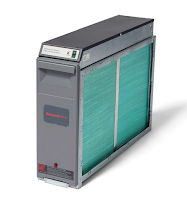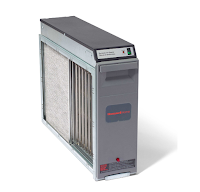Signs of Bad
Attic Insulation
 |
| Old Fiberglass Insulation |
1. It's Pink
We all know fiberglass insulation is among the cheapest but does that mean it's the worst? Not always - but more than likely, yes! Especially when it comes to keeping your home WARM in the winter, you might want to consider ditching the pink stuff. Newer, more innovative methods include removing existing insulation and air sealing cracks and gaps with two-parts expanding spray foam THEN blow in cellulose insulation. We PROMISE it'll be a game-changer! We've helped customers save up to 85% on their energy bills and that kind of savings is no joke!!
 |
| Thermal Image of Can Lights |
Can lights are always a great addition to any home however, they are known to be very leaky! This thermal image shows proof of just that! It is always best to do a thermal imaging test of your can lights during the day when the lights are not being used. Another way to tell is from the attic. If you can light coming into the attic, then air is escaping from the home! This is the air that you pay for. You don't want that air leaking into your attic, it's supposed to be heating your home!
3. Cold Air Drafts & Cold Floors
You pay to heat and cool your home. Air loss is often due to leaks in the attic, despite having insulation. The problem often lies beneath the insulation, where gaps and cracks go unnoticed. These need to be sealed. Much like the can light example. Another factor to consider is if the attic has a proper amount of insulation. Most Indiana homes are underinsulated! Especially older homes! These types of homes are most likely to fall victim to cold air drafts as they are underinsulated and have lots of unsealed gaps and cracks for air to flow. The same goes for cold floors. You might immediately blame the basement or crawl, but due to the building envelope science (which means the physical separator between the conditioned and unconditioned environment of a building) when air is leaking out the top of the home, air must be replaced through the bottom. Meaning the house will pull in cold outside air from the basement/crawl, up into the home. Giving you the feeling of cold floors!
4. High Energy Bills
When your home is leaky and underinsulated, it causes your heating and cooling system to work harder. When the air you pay to heat and cool your home escapes, your thermostat tells your HVAC to work harder to replace that air, causing that unit to run more often. This ends up being pretty costly, especially during those harsh summer and winter months. This wear and tear on your HVAC unit can shorten its life span and cause unexpected problems, even if you do get the system tuned-up frequently!














